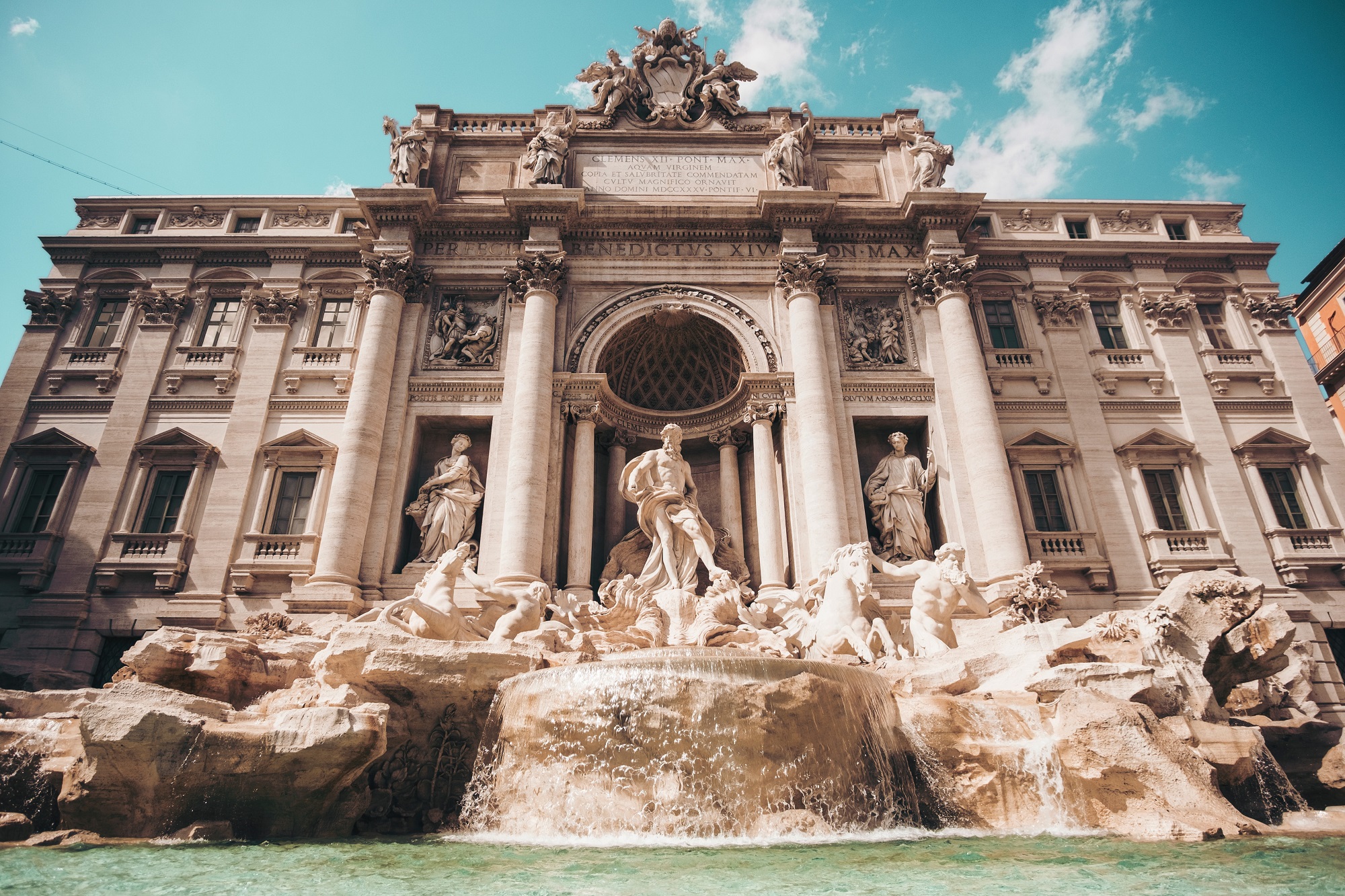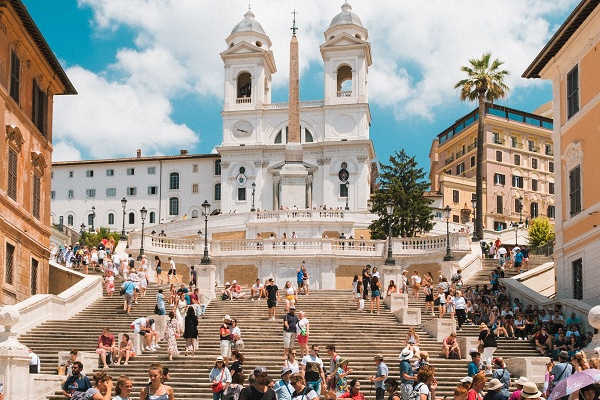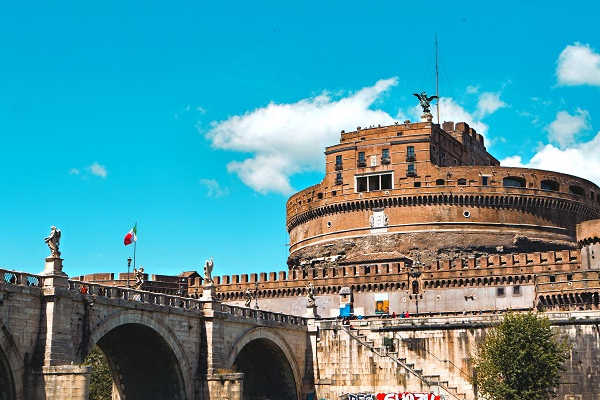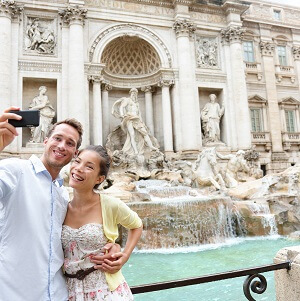Rome, the Eternal City is packed full of art, history and charm, with so much to do in such little time, what should you make time to see?
Nicknamed the Eternal City after the relentless power shown by Ancient Rome seemed everlasting. Many citizens and writers believed the city, and the Roman Empire, would last forever, and it has. Each year Rome welcomes millions of tourists to its streets, all eager to feast their eyes on the city’s rich historical sites and magnificent artworks. It’s past greatness lives on in Rome’s ruins, museums and galleries. Really, the list is endless. Lucky for you, you won’t have to go far to find some of Rome’s best attractions, but to make sure you don’t miss anything, check out our top attractions below.
-
The Colosseum
Even though the line of tourists can seem endless, the Colosseum is not to be missed. Almost 2,000 years old, it’s staggering that this building still stands, and fairly intact. It was the largest amphitheater ever to have been built at the time of construction. The fact that its structure is so impressive to us now, in a world full of technologically advanced architecture, goes some way to demonstrating the ambitious nature of this task, which at the time, must have been eye-opening. The Colosseum opens at 8:30am daily, with closing times varying depending on the time of year. Admission is €12, with skip the line passes available for an additional cost. All our Colosseum Tours include skip the line passes and they’re worth every penny!
-
Roman Forum and Palatine Hill
Right next to the Colosseum is the Roman Forum and Palatine Hill, located on the same archaeological site and counting as one admission (bonus!). Again, admission is €12, although we recommend getting a guide to show you the ruins to give some context and bring the ancient remains to life. Look through our Morning Private Colosseum Tour which includes a guided tour of both the Colosseum, the Forum and Palatine Hill with skip the line tickets. Two very significant sites, Palatine Hill saw the first settlements of Rome with excavations dating as early as the 10th century BC, whilst the Roman Forum was the monumental main square of Ancient Rome. If you’re at the Colosseum it would be crime not to pay a visit to these important sites too.
-
Trevi Fountain
Completed in 1762, Trevi Fountain is one of the most famous fountains in the world. Designed by Nicola Salvi and finished by Giuseppe Pannini, the fountain is a huge attraction for its elaborate and prestigious design made from white stone. Join other tourists in the ritual of throwing a coin into the water using your right hand, making sure it goes over your left shoulder. According to legend this ensures you will return to Rome in future. No touching the other coins though! It doesn’t matter how innocent your intentions, taking a coin from the fountain is classed as a crime, with proceeds going to charity. On top of this, do not sit, lean or place your bags on the fountain, and definitely don’t get in, or you’ll be facing a €500 fine. As the fountain can get ridiculously busy, we recommend going just before lunch when the crowds are slimmer. We should also mention that the popularity of the fountain has also attracted pickpockets so make sure to keep your belongings safe and secure.
-
Trastevere Neighborhood
For a much more authentic Roman feel head to Trastevere neighborhood. This area of the city is off the main tourist path making it a great place to stroll around. The winding alleys and cobbled streets are picturesque and there’s some yummy local food to be found here, at a reasonable price. Try some of the best thin crust pizza from Dar Poeta, or sample some craft beer from the traditional pubs or bars dotted around the area, Big Star is a lively spot offering local prices and live music.
-
The Patheon
Completed by the Emperor Hadrian, the Pantheon dates back to around 126 AD, making it one of the best-preserved buildings in the world. Definitely worth a visit for another look into the impressive history of Ancient Rome and the magnificent architecture that was constructed. As soon as you walk through the heavy bronze doors, you’ll get an appreciation for the largest unreinforced dome ever built. The best part? Entrance is free!
-
The Spanish Steps
Built between 1723 – 1725, the Spanish Steps connect the Piazza di Spagna at the bottom with the Trinita dei Monti church at the top. Aesthetically pleasing in its white sloping design that splits the stairs into three parts, the 135 Spanish Steps are a great place to hang out, people watch and simply soak up the Rome experience. If you’re trip falls in April – May, you can join in the annual spring tradition of laying white and lilac azalea plants on the steps, creating a field of flowers.
-
Basilica di Santa Maria Maggiore
Founded in 423 AD, the Basilica is one of the most impressive churches in Rome. It’s covered in 5th-century mosaics which display 36 scenes from the Old Testament. With no admission fee you can appreciate the church’s incredible intricate artwork and visit the tomb of Gian Lorenzo Bernini, one of Rome’s most famous sculptors.
-
Borghese Gallery and Museum
Housed in the beautiful Villa Borghese Pinciana, the museum is filled with sculptures, mosaics and paintings from the 15th– 18th century. The collection, initially started by Cardinal Scipione Borghese, preserves many masterpieces by Giovannia Bellini, Raffaello, Bernini and more. As well as the museum and gallery, the Borghese has some beautiful gardens to wander round, with plenty of flora and a small lake. You can buy your tickets when you arrive, however these are limited, so it’s worth buying your tickets in advance to guarantee entrance. Tickets cost €22.
-
Vatican City
Although this is a whole trip by itself, the Vatican is still situated in Rome, despite being its own city-state. The centre of Catholicism, the Vatican boasts several sights, relics and museums, including St. Peter’s Basilica and St. Peter’s Square, home of the Pope, the Vatican Museum and the Sistine Chapel are just some of the attractions within the Vatican’s walls. Entrance tickets start at €17, with skip the line passes also available.
-
Castel Sant’Angelo
Built as an impressive tomb for Emperor Hadrian and his family between 123-139 AD, the castle was later converted to a fortress to protect the clergy and is now a museum for tourists. As mentioned in Dan Brown’s famous novel The Da Vinci Code, there is a passageway in the castle that runs into the Vatican, designed as an escape route for the Holy See. With such an interesting history, the castle is definitely worth a visit so you can look round its walls and passageways for yourself. With seven levels in total, there is some amazing sculptures to marvel at, as well as excellent views of the city. Admission prices vary depending on the time of year and who’s booking, children as young as four, for example, go free.
These are the best sights to see, but art or history enthusiasts can really go to town with the number of galleries, museums and monuments Rome has to offer. Our expert guides who will be able to equip you with more in-depth knowledge around Rome’s main attractions.
Related article: How Long Did Rome Really Take to Build?
Explore Rome’s Best Tours
-
Rome Day Tour with Vatican & Colosseum
9 Hours
€95
See More -
Morning Ancient Rome & Colosseum Tour
2.5 Hours
€72
See More -
Historical Rome Walking Tour
3 Hours
€48
See More -
Borghese Gallery & Gardens Tour
3 Hours
€83
See More










